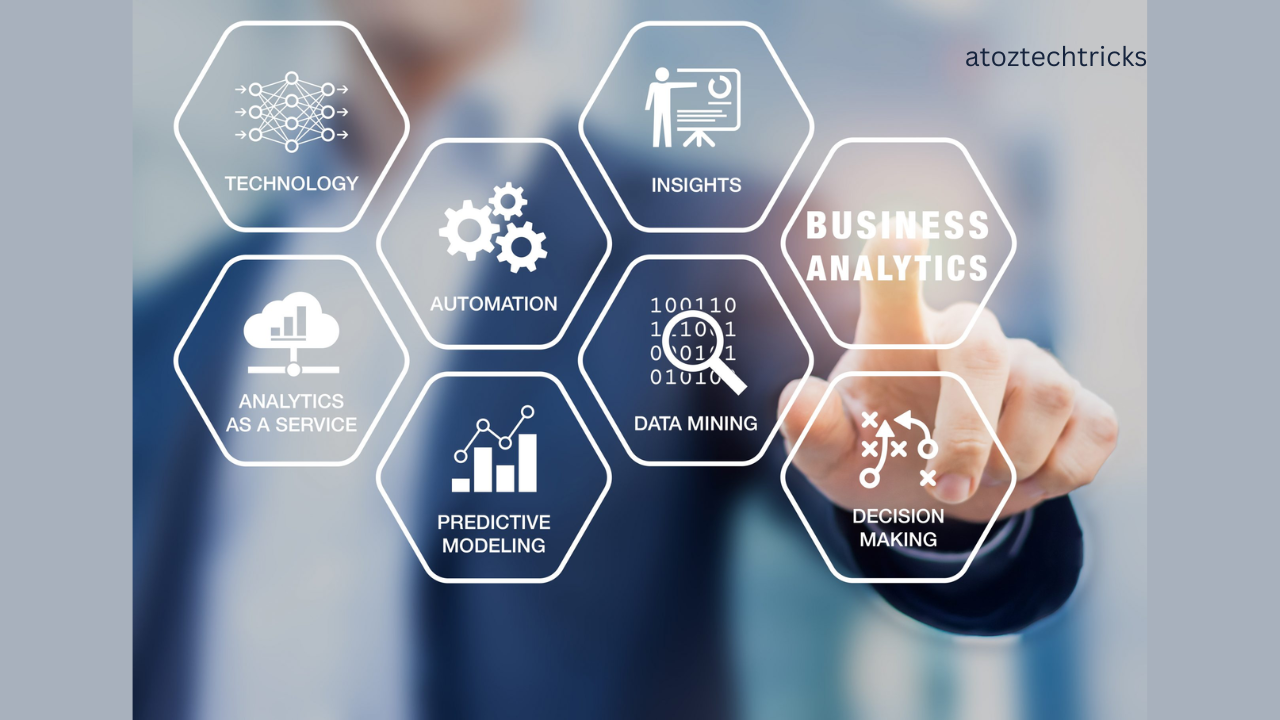Use Cases for Data Science in Business
Data science has revolutionized the way businesses operate by providing actionable insights derived from vast amounts of data. This technology encompasses a variety of techniques, including machine learning, statistical analysis, and data visualization, which enable companies to make informed decisions, optimize processes, and gain a competitive edge. In this comprehensive guide, we will explore diverse use cases for data science in business, highlighting how different industries leverage data science to achieve their objectives.
1. Customer Segmentation and Personalization
Overview:
Customer segmentation and personalization are crucial for businesses aiming to tailor their marketing strategies and product offerings to meet the specific needs of different customer groups. Data science enables companies to analyze customer data and segment their audience based on various criteria such as demographics, behaviour, and purchase history.
Use Case:
Retailers like Amazon and Walmart utilize data science to segment their customers and deliver personalized recommendations. By analyzing past purchase behaviours, browsing history, and demographic data, these companies create detailed customer profiles. Machine learning algorithms then predict what products a customer might be interested in, leading to personalized recommendations that increase sales and customer satisfaction.
Benefits:
- Enhanced Customer Experience: Personalized recommendations and targeted marketing improve customer engagement and satisfaction.
- Increased Sales: Tailored promotions and product suggestions can drive higher conversion rates and revenue.
- Improved Customer Retention: Personalized interactions foster customer loyalty and reduce churn rates.
2. Predictive Analytics for Sales Forecasting
Overview:
Predictive analytics involves using historical data and statistical algorithms to forecast future trends and outcomes. In sales forecasting, data science helps businesses predict future sales volumes, identify potential opportunities, and mitigate risks.
Use Case:
A global consumer goods company, Procter & Gamble, uses predictive analytics to forecast sales and manage inventory effectively. By analyzing historical sales data, market trends, and external factors such as economic conditions, the company can accurately predict demand for its products. This foresight allows Procter & Gamble to optimize inventory levels, reduce stockouts, and avoid overstock situations.
Benefits:
- Optimized Inventory Management: Accurate sales forecasts help in maintaining optimal inventory levels.
- Increased Efficiency: Reduces the risk of stockouts and overstocking, leading to cost savings.
- Informed Decision-Making: Provides valuable insights for strategic planning and resource allocation.
3. Fraud Detection and Prevention
Overview:
Fraud detection and prevention are critical for safeguarding business operations and financial assets. Data science applications in this area involve analyzing transactional data to identify anomalies and suspicious activities that may indicate fraudulent behaviour.
Use Case:
Financial institutions such as banks and credit card companies employ data science to detect and prevent fraud. By analyzing transaction patterns, customer behaviour, and historical fraud data, machine learning models can flag unusual activities and transactions that deviate from normal patterns. For example, if a customer’s credit card is used for a large purchase in a foreign country shortly after a local transaction, the system may trigger an alert for potential fraud.
Benefits:
- Enhanced Security: Early detection of fraudulent activities helps in minimizing financial losses.
- Reduced False Positives: Machine learning models improve accuracy in identifying legitimate transactions.
- Improved Customer Trust: Effective fraud prevention measures foster customer confidence in the security of their transactions.
4. Supply Chain Optimization
Overview:
Supply chain optimization involves improving the efficiency and effectiveness of the supply chain network. Data science plays a vital role in this area by analyzing supply chain data to streamline operations, reduce costs, and enhance overall performance.
Use Case:
Companies like IBM and Siemens use data science to optimize their supply chains. By leveraging data from various sources, including suppliers, production facilities, and logistics providers, they can analyze supply chain performance and identify bottlenecks. Predictive analytics and optimization algorithms help in forecasting demand, managing inventory, and optimizing transportation routes.
Benefits:
- Reduced Costs: Optimization of supply chain processes leads to cost savings in procurement, production, and logistics.
- Improved Efficiency: Streamlined operations enhance overall supply chain performance.
- Better Risk Management: Early identification of potential disruptions allows for proactive risk mitigation.
Blockchain Technology: Revolutionizing Data Security and Decentralization
5. Customer Churn Prediction
Overview:
Customer churn prediction involves identifying customers who are likely to leave or stop using a product or service. Data science helps businesses analyze customer behaviour and predict churn, enabling them to implement retention strategies.
Use Case:
Telecommunications companies like Verizon and AT&T use data science to predict customer churn. By analyzing customer usage patterns, service interactions, and historical churn data, predictive models can identify customers at high risk of leaving. These insights allow companies to implement targeted retention strategies, such as personalized offers or loyalty programs.
Benefits:
- Improved Retention: Targeted retention efforts help in reducing churn rates and maintaining a loyal customer base.
- Increased Revenue: Retaining existing customers is often more cost-effective than acquiring new ones.
- Enhanced Customer Insights: Understanding churn factors provides valuable insights into customer preferences and behaviours.
6. Dynamic Pricing
Overview:
Dynamic pricing involves adjusting prices based on real-time data and market conditions. Data science enables businesses to implement dynamic pricing strategies that maximize revenue and competitiveness.
Use Case:
Airlines and ride-sharing companies like Uber use dynamic pricing algorithms to adjust prices based on demand and supply conditions. For example, during peak travel seasons or high-demand periods, airlines can increase ticket prices to optimize revenue. Similarly, Uber adjusts ride fares based on factors such as location, time of day, and demand-supply balance.
Benefits:
- Revenue Maximization: Dynamic pricing helps in optimizing revenue based on market conditions.
- Competitive Advantage: Real-time pricing adjustments enhance competitiveness and market positioning.
- Better Demand Management: Aligning prices with demand patterns improves overall business performance.

7. Employee Performance and Recruitment
Overview:
Data science can be applied to human resources (HR) to enhance employee performance management and recruitment processes. Analyzing employee data helps in identifying performance trends and optimizing recruitment strategies.
Use Case:
Companies like Google and LinkedIn use data science to improve HR practices. By analyzing employee performance data, such as productivity metrics, feedback scores, and career progression, they can identify high-performing employees and areas for improvement. In recruitment, data science helps in analyzing candidate profiles, predicting job fit, and streamlining the hiring process.
Benefits:
- Enhanced Talent Management: Data-driven insights help in identifying and nurturing top talent.
- Optimized Recruitment: Improved candidate matching and hiring efficiency lead to better hires.
- Increased Employee Satisfaction: Performance management and career development strategies are more effective.
8. Marketing Campaign Optimization
Overview:
Marketing campaign optimization involves analyzing campaign performance data to refine strategies and improve ROI. Data science helps in understanding the effectiveness of marketing efforts and optimizing future campaigns.
Use Case:
Companies like Coca-Cola and Unilever use data science to optimize their marketing campaigns. By analyzing data from various channels, such as social media, email, and online ads, they can evaluate campaign performance and identify successful tactics. A/B testing and predictive analytics help in fine-tuning marketing strategies and targeting the right audience.
Benefits:
- Improved ROI: Data-driven optimization enhances the effectiveness of marketing campaigns.
- Better Targeting: Insights into customer preferences and behaviours lead to more targeted marketing efforts.
- Increased Engagement: Optimized campaigns result in higher customer engagement and conversion rates.
9. Product Development and Innovation
Overview:
Data science plays a significant role in product development and innovation by providing insights into market trends, customer preferences, and product performance.
Use Case:
Tech companies like Apple and Microsoft use data science to drive product development and innovation. By analyzing customer feedback, usage patterns, and market trends, they can identify opportunities for new products and features. For example, user feedback data may reveal a demand for a specific feature in a software application, guiding the development team in creating that feature.
Benefits:
- Faster Innovation: Data-driven insights accelerate the product development process.
- Better Market Fit: Products are more likely to meet customer needs and preferences.
- Enhanced Competitiveness: Continuous innovation helps companies stay ahead in the market.
10. Risk Management and Compliance
Overview:
Risk management and compliance involve identifying, assessing, and mitigating risks to ensure business continuity and regulatory adherence. Data science aids in managing risks and ensuring compliance by analyzing relevant data.
Use Case:
Financial institutions and insurance companies use data science for risk management and compliance. By analyzing historical data, market conditions, and regulatory requirements, they can assess risk levels and ensure compliance with industry standards. For example, insurance companies use predictive models to assess the risk associated with insurance claims and set appropriate premiums.
Benefits:
- Enhanced Risk Assessment: Data-driven insights improve risk assessment and management.
- Regulatory Compliance: Ensures adherence to regulatory requirements and reduces legal risks.
- Improved Decision-Making: Data-driven risk management supports better decision-making and strategic planning.

Data science has become an indispensable tool for businesses across various industries, providing valuable insights and driving strategic decisions. From customer segmentation and predictive analytics to fraud detection and supply chain optimization, the applications of data science are vast and diverse. By leveraging data-driven insights, businesses can enhance their operations, improve customer experiences, and gain a competitive edge in the market. As technology continues to evolve, the potential use cases for data science in business will only expand, offering new opportunities for innovation and growth.




Post Comment